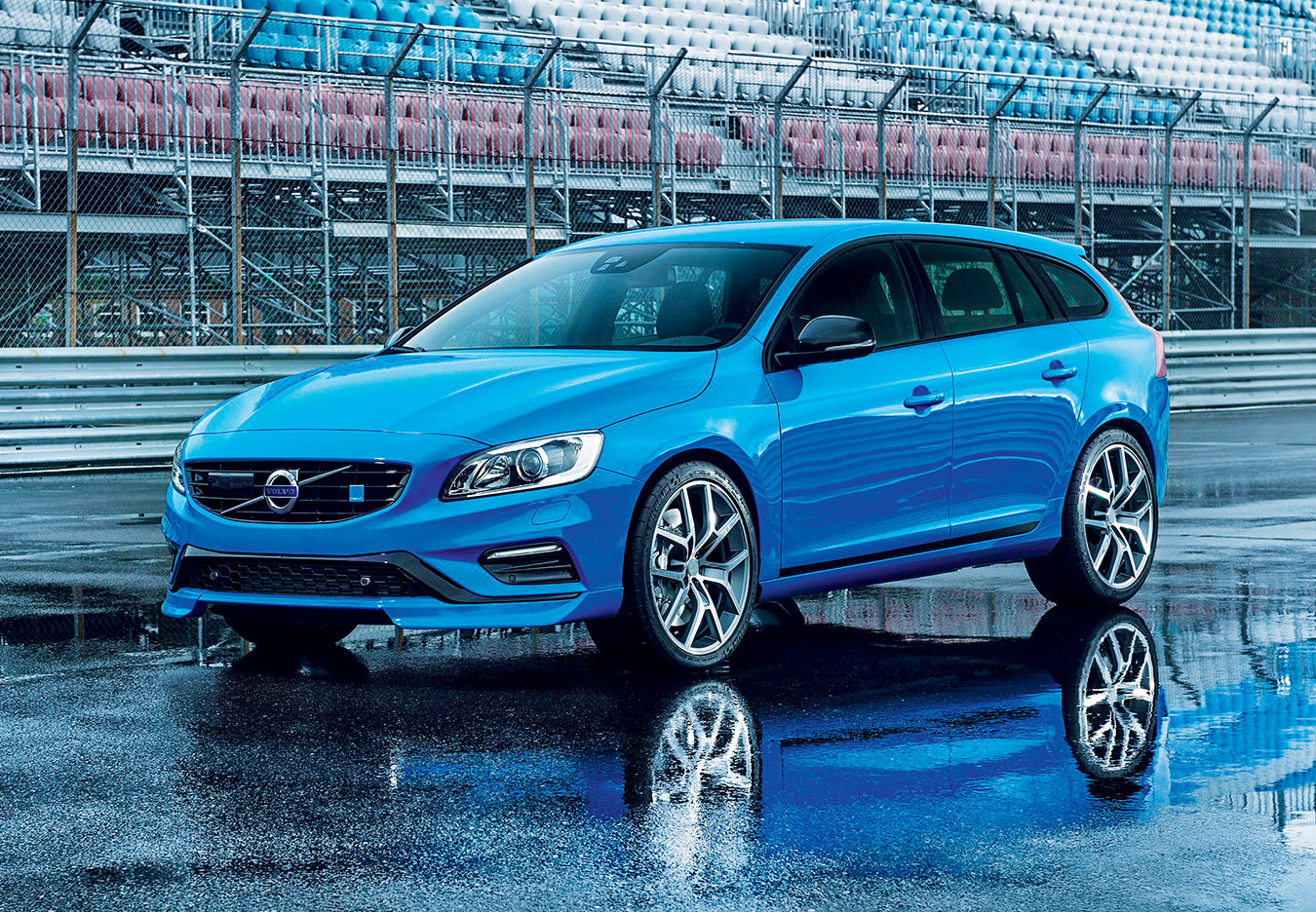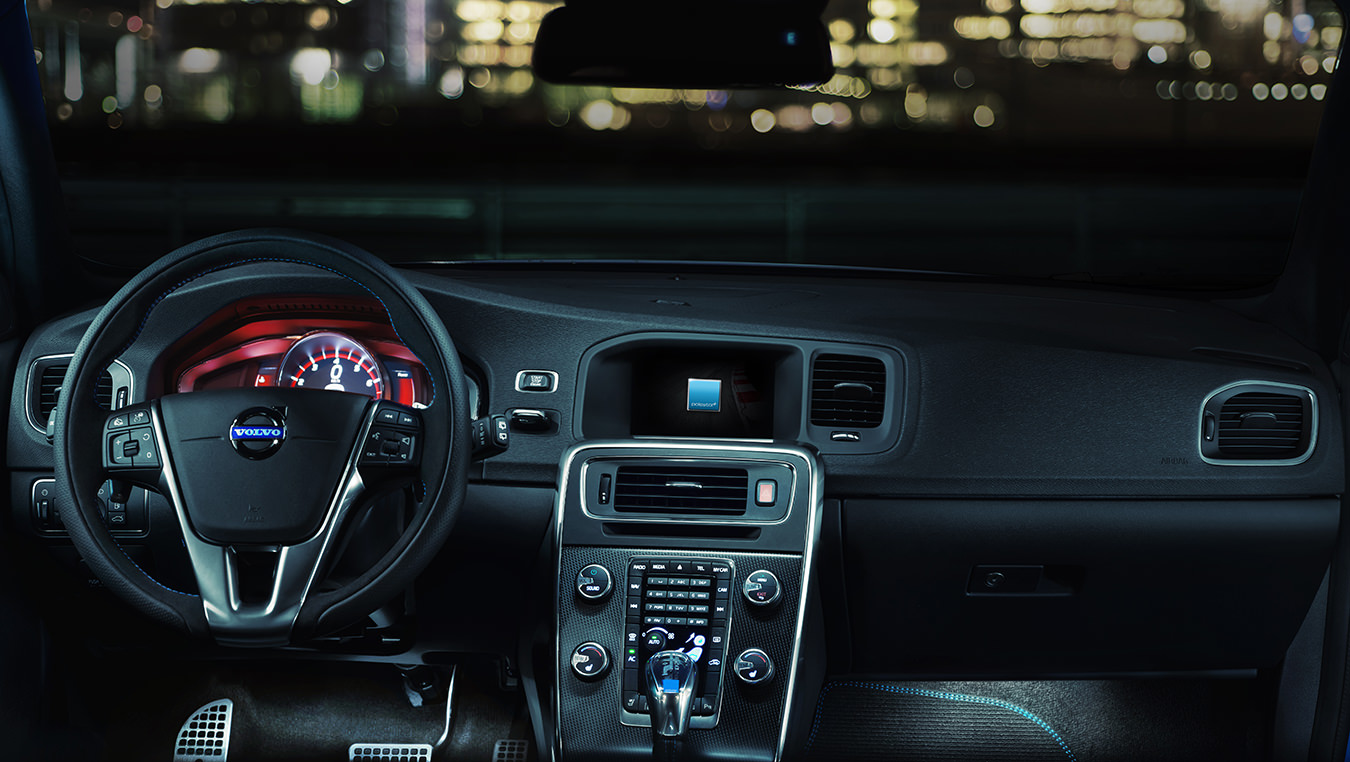Gothenburg, Sweden: on the surface of it, the idea of a high-performance version of a Volvo station wagon makes no sense at all. First of all, the Swedish carmaker has earned a reputation for being a pioneer in the area of safety, and fast cars don’t necessarily support that brand image. Then, there is the simple fact that the topic of conversation here is a station wagon, the type of vehicle not normally considered a starting point for adventures of the tire-blistering kind. Finally, exceeding the speed limit is a very serious transgression in Sweden, a flouting of the law that can quickly result in license suspension and significant fines based on one’s net annual income. But the Volvo V60 Polestar is not your typical station wagon. Nor is it your typical Volvo. Nor is it intended solely for the domestic market. These are the exact reasons why it’s deserving of a closer look.
A quick history lesson: Since 1996, the company that began as Flash Engineering has been designing, constructing, and developing Volvos of various types and taking them to the track, competing in various series around the world beginning with the Swedish Touring Car Championship. The outfit proved successful right out of the gate, establishing a record of success that continued after Flash Engineering changed hands and became Polestar in 2005. With their capabilities for developing Volvo race cars well established, it was natural for Polestar to power a separate division devoted to bringing increased performance to the more average, everyday Volvo. The name for this division: Polestar Performance.
Both the Racing and Performance arms of the company work out of the same location, a combination office and tuning shop in an industrial park in Gothenburg, situated less than 13 kilometres from Volvo corporate headquarters. In 2009, Polestar became an official performance partner to Volvo and began offering engine optimization packages for their vehicles, developing concepts and, ultimately, working on special editions together.
The MY2015 Volvo V60 Polestar is a very special edition. Prospective customers in just eight countries, including Canada, have the (admittedly limited) chance at one of 750 examples of the V60 Polestar and its sedan counterpart, the S60 Polestar. As soon as the production run is completed, as the saying goes, it’s all over but the crying. This is the first time that a Polestar has been offered for sale in Canada; it will very likely not be the last.
But the real strength of the V60 Polestar is not its straight-line performance; rather, it’s how the car reacts to changes in direction, even changes of the decidedly sudden kind.
Based on the V60 T6 R-Design, the Polestar version features a more potent engine, a more powerful braking system, stiffer chassis, revised suspension system, quicker-shifting 6-speed automatic transmission and fine-tuned stability control system. The all-wheel drive system, a cornerstone of the Volvo fleet, has been honed to provide crisper response to changeable traction conditions and a more dynamic driving experience overall. The engine, a 3.0-litre turbocharged inline 6-cylinder, has been massaged to produce 345 horsepower and 367 lb-ft of torque. Net result: the V60 Polestar is a quick car in a straight line. The sprint from 0 to 100 km/h rushes past in five seconds. The car comes equipped with a launch control system that ensures every standing start is as rapid as possible; the all-wheel drive system keeps the forward momentum going, even in slick circumstances.
But the real strength of the V60 Polestar is not its straight-line performance; rather, it’s how the car reacts to changes in direction, even changes of the decidedly sudden kind. Before slipping behind the steering wheel for a cross-country drive to Stockholm, we visited the Volvo test facility in Hällered, about an hour outside Gothenburg, and rode shotgun in the wicked wagon. The driver, a Volvo engineer, sent the V60 hurtling along a high-banked oval track that’s designed to test vehicle stability. At speeds upwards of 250 km/h, the engineer showed little regard for the cardinal rules of driving on such tracks—stay smooth, stay in your lane—by wrestling with the steering wheel in an attempt to make the car behave improperly. The track, it must be noted, was damp, thereby ensuring the perfect conditions for a high-speed meeting with the guardrail. The meeting never took place. The suspension system soaked up the transitions expertly as the V60 Polestar dropped down the banking from one lane to the next. The AWD system shuttled torque around to send power to the wheels with the most available grip. And the tires gripped the surface of the wet tarmac with true grit and determination.
The capacity to handle this kind of test was wildly impressive. So, too, was the high degree of comfort we experienced during the 470 kilometre–long drive to Stockholm. We drove past endless scenery that resembled a mix of the B.C. interior (coniferous trees everywhere) and cottage country north of Toronto (giant slabs of rock); the V60 Polestar proved to be the perfect ride.
The surprising part about the V60 Polestar is its outright speed and handling; then, with the touch of a button or two, the Volvo becomes reassuringly quiet and smooth. A number of subtle yet striking visual enhancements echo this duality. The front splitter and rear spoiler are developed for reduced airflow beneath the car and increased downforce. The steering wheel, seats, and shift lever sport enhanced leather, nubuck, and Polestar blue contrast stitching. But even with these understated touches derived from racing, this is a car that could only have been produced by Volvo.
Workaday wagon or weekend warrior—the choice is yours.











